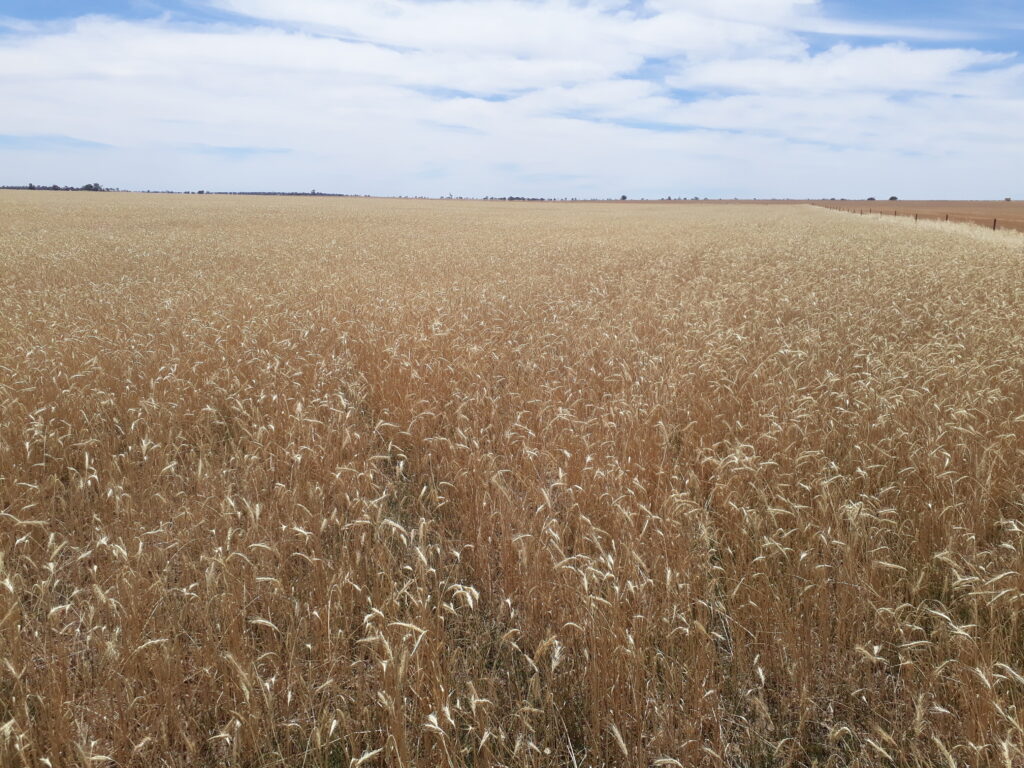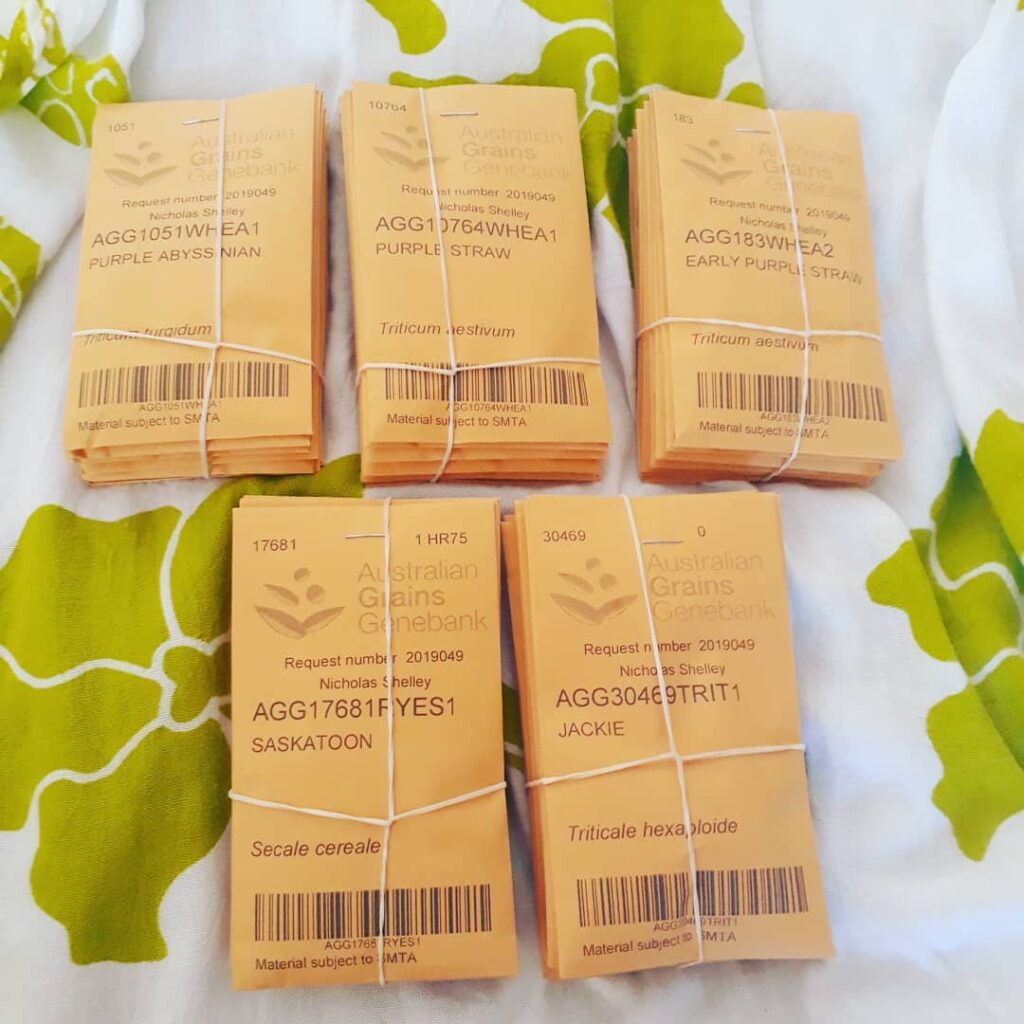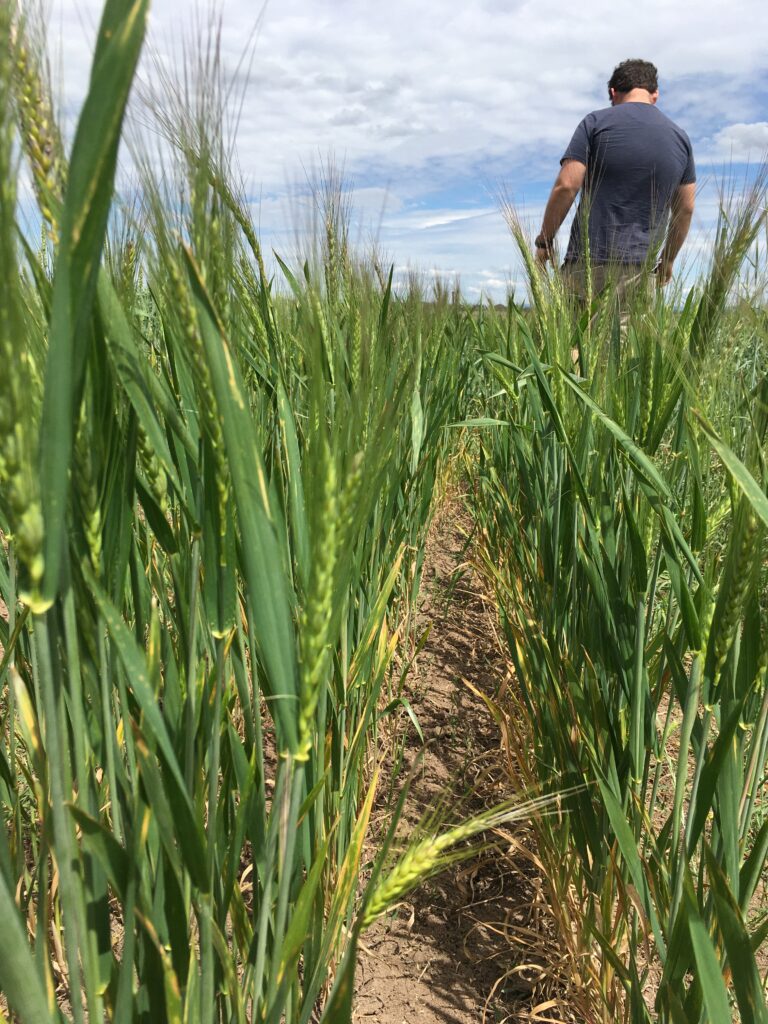Stretch then came back to harvest the grain in December 2021. We went to watch with now four week old baby baker in tow on another rather hot day.
Along with Stretch came his little Kingaroy trial plot harvester, which was also a lot easier and faster than harvesting by hand with scissors like we did last year, but with the added bonus of being able to thresh the grains and give us a rough idea on the spot of how each blend or variety yielded. Having a larger seed amount to begin with, the blends gave us between 5kg and 26kg or so of grain (after cleaning). Most of the others were between 1kg to 4kg, decent amounts considering what we started with, just 5g, but they will continue to be built up slowly and most will need a few more seasons before we have a taste testing amount. The Trial Plot ‘Growth’ Chart at the bottom of the post shows how much of each variety was harvested each year and I guess it also demonstrates the challenge of building up a large enough quantity for use, sale and also to put back for the following year including a buffer in case things go awry.
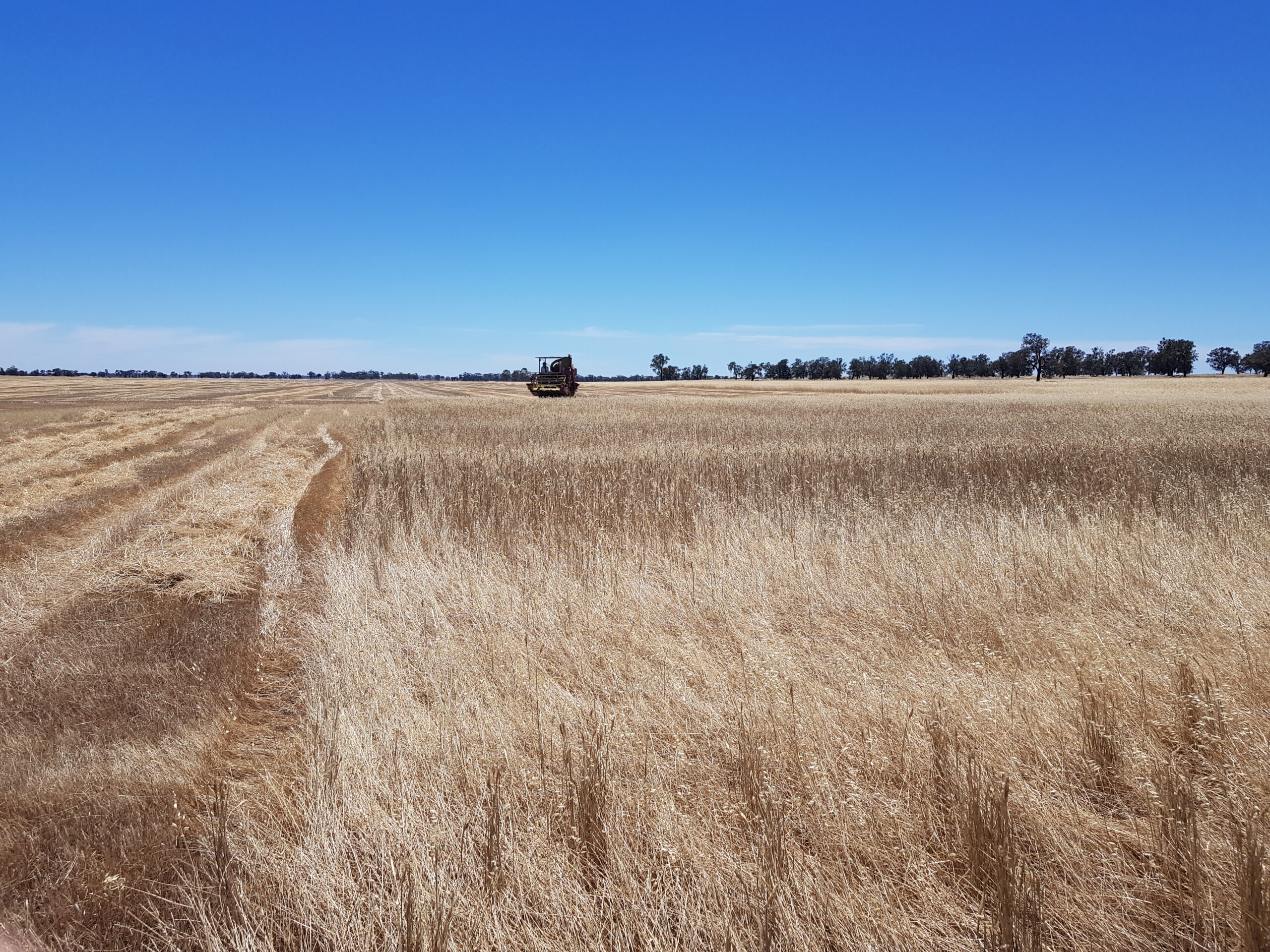
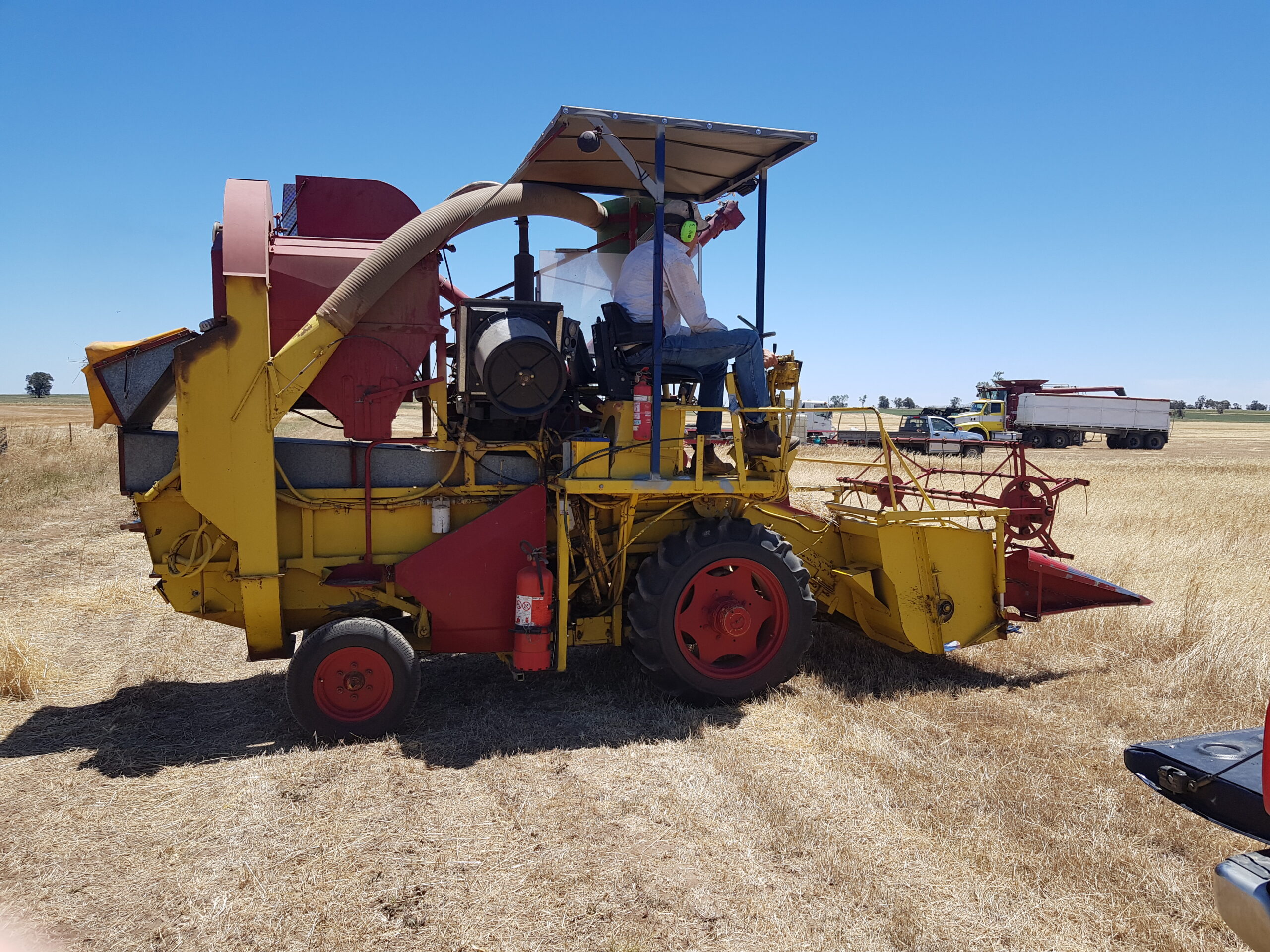
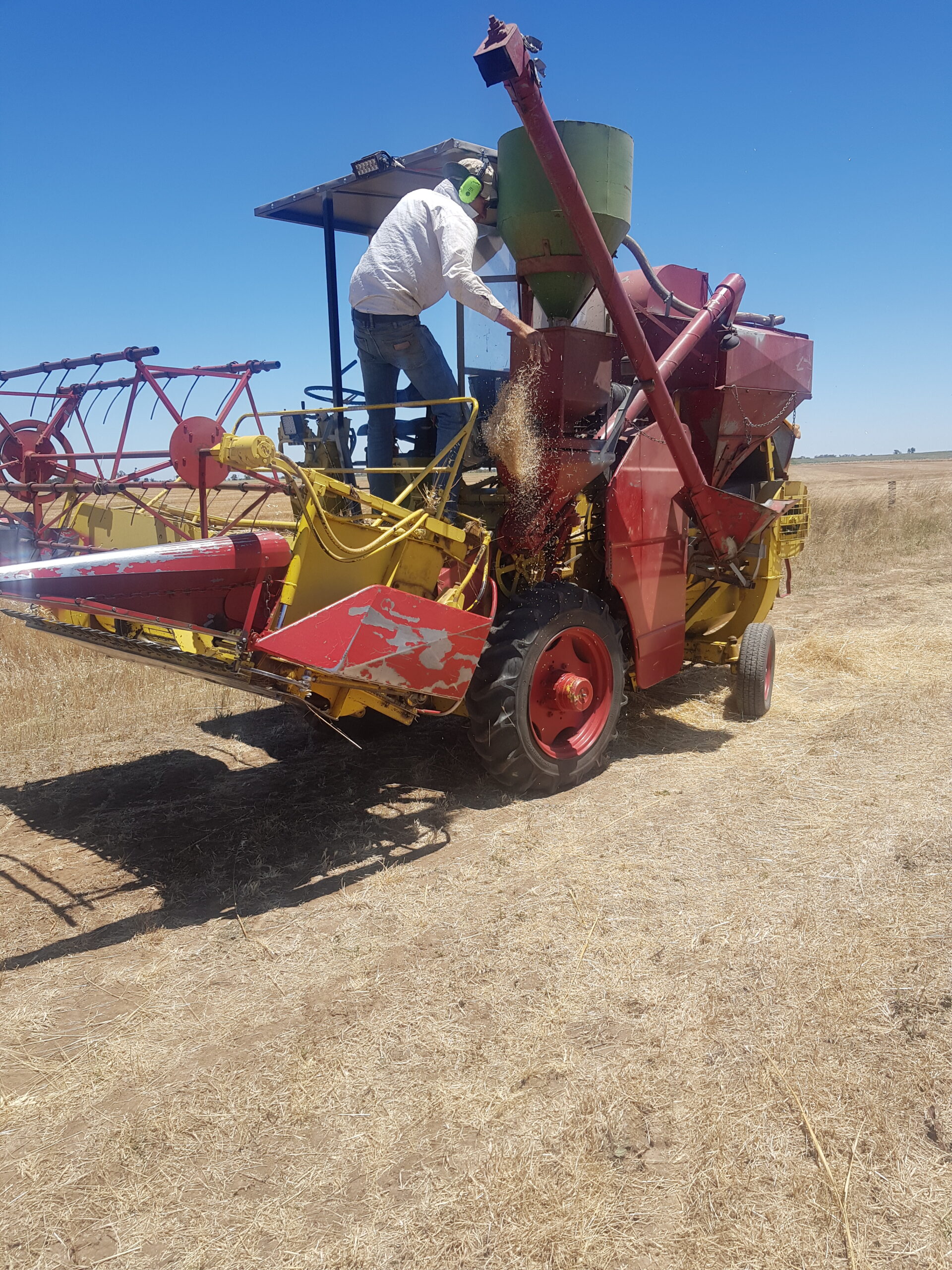
Again Steve’s equipment wasn’t quite suited to such small quantities. Steve and Noel attempted to clean the grains manually using grain cleaning screens. However, they soon realised this would take much longer than they cared for and borrowed from neighbouring organic farmer Greg a small Ukrainian grain cleaner which had greater aspiration and was more suited to small amounts.
With more info and better idea of how the grains handled the real world of farming it was time to sit down and work out what to do with the varieties and if it was worth continuing with all of them or just focusing on the ones that seemed best suited to the climate, had a decent yield and whether we thought there would be a market for them one day.
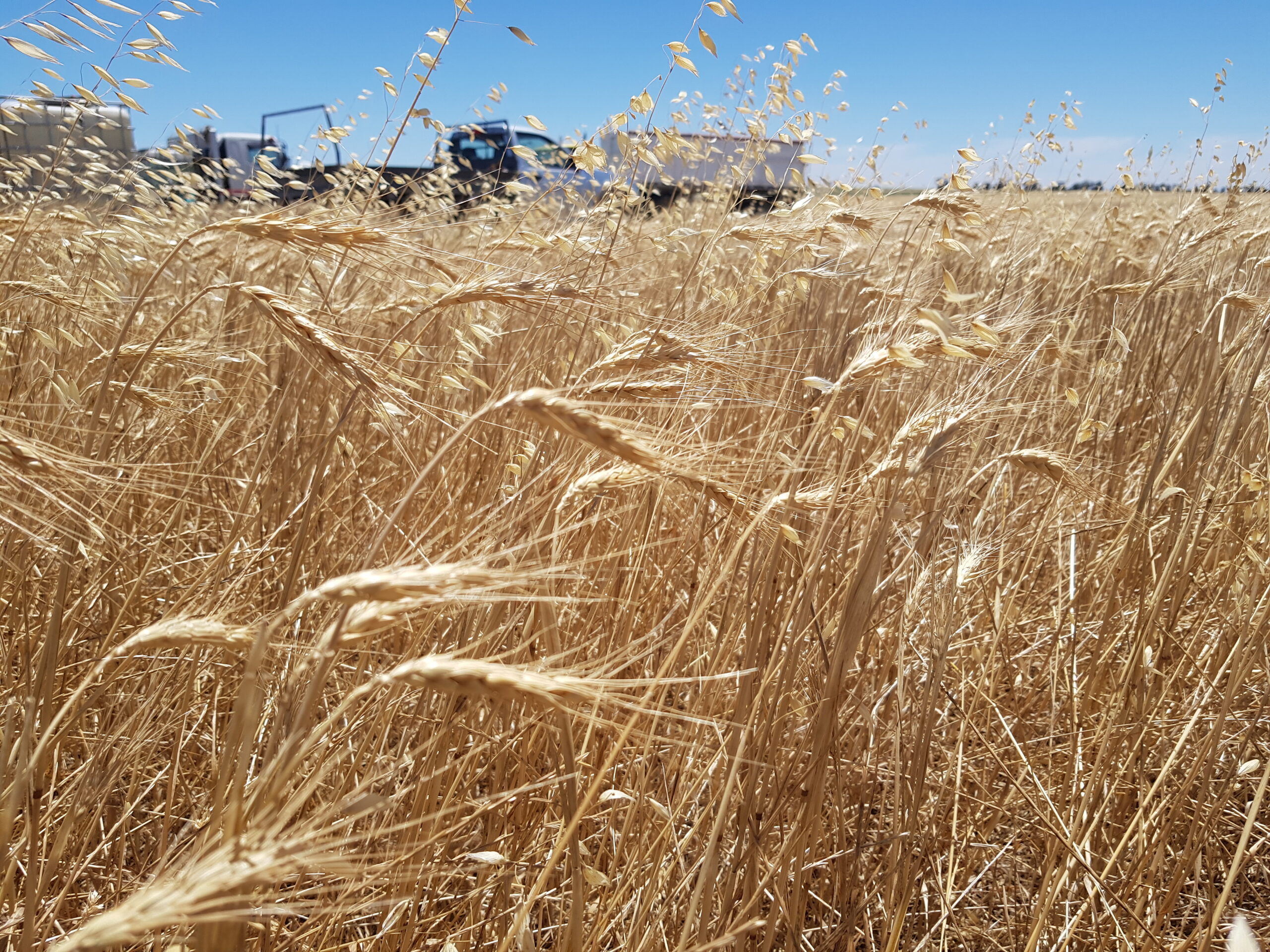
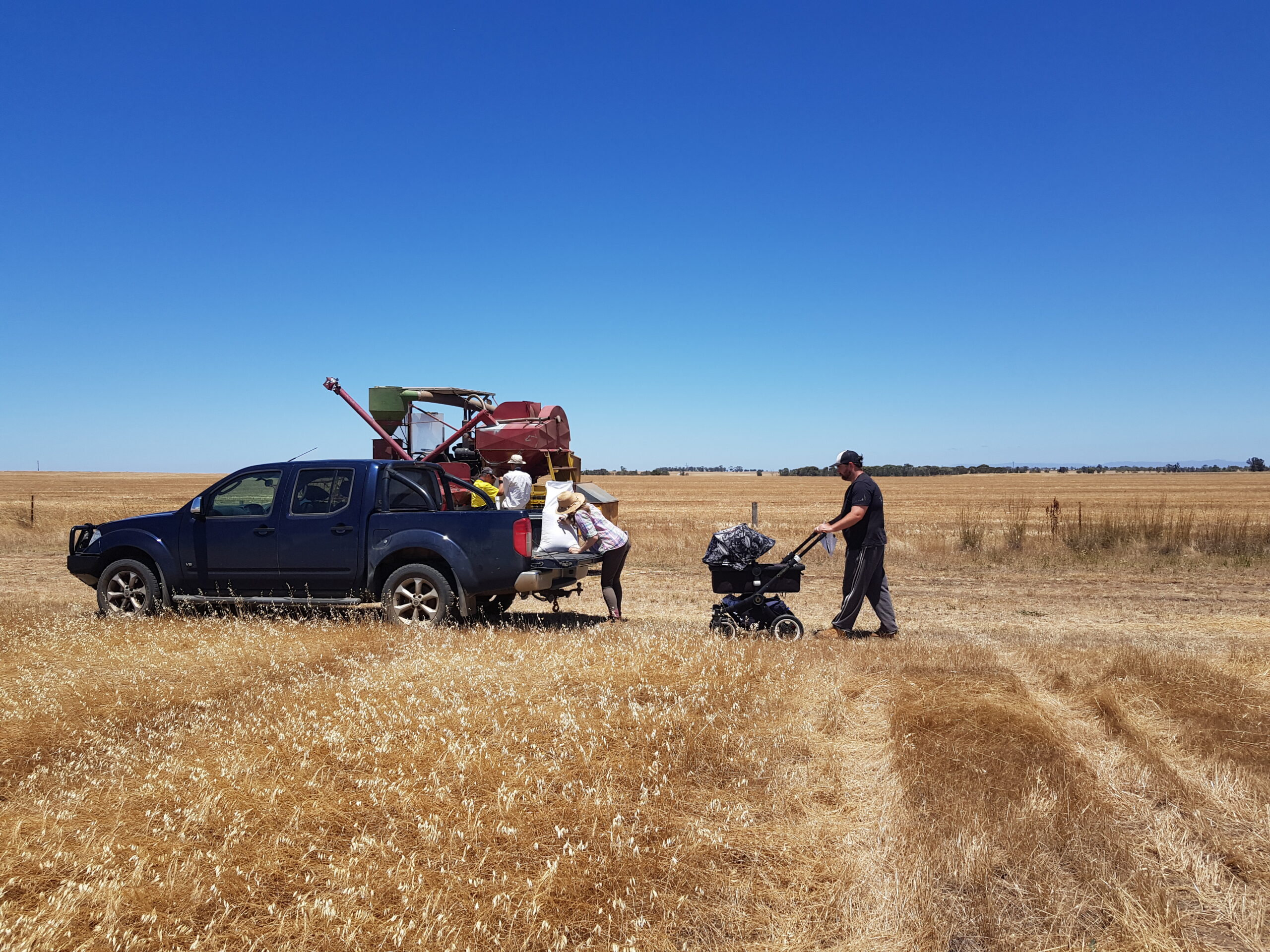
Some of the durum wheat varieties yielded ok. Ideal for certain types of extruded pasta, they provide distinct and delicious flavours and blended with other wheat flour could be suitable for leavened breads but are they worth Steve and Tania buying another silo to store them? Steve and Tania knew that historically Durum wheat needed a hotter climate finish than what they get on their farm so it was decided to shelf these ones, for another project perhaps. Or one batch of pasta for a shared lunch. It was decided to continue with all the other blends and varieties for at least another season.
The varieties that are being grown aren’t the standard stuff you’d find at the shops. They (hopefully) have a much more distinct and interesting flavour, are more nutritious and may have specific qualities making them better suited for different baking applications or cooking in general, I mean purple wheat noodles are already a thing. We’ll have to see what makes the cut next year, in the meantime Jackie and I are brainstorming a few nick names for the new varieties which will be a bit more catchy than 11101.
On to planting 2022!
Trial plot ‘growth’ chart – harvest amounts for 2020 and 2021
| Type | Planted in 2020 | 2020 harvest | 2021 harvest |
| Purple straw wheat (14 varieties) | 70 g | 5,990 g | 26,440 g |
| Yecora red wheat blend (8 varieties) | 40 g | 5,080 g | 12,750 g |
| Light purple blend (4 varieties) | 20 g | 1,889 g | 5,545 g |
| Purple wheat 27548 | 5 g | 463 g | 4,220 g |
| Aus wheat 11101 | 5 g | 460 g | 2,310 g |
| Purple wheat Koelbird | 5 g | 400 g | 1,335 g |
| Heritage wheat PI 534290 | 5 g | 321 g | 1,915 g |
| Durum AU 9599 | 5 g | 301 g | – |
| Durum Nacozari 76 | 5 g | 410 g | 3,800 g for all three Durum combined |
| Durum PI 316440 | 5 g | 267 g | – |
By Nick
(with edits from Tan & Jac)

